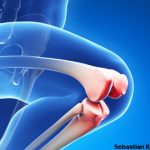NEW YORK (Reuters Health)—Inpatient rehabilitation did not lead to better mobility following total knee replacement compared with a home-based program in a randomized controlled trial (RCT) conducted in Australia.
The findings do not support inpatient rehabilitation for adults undergoing uncomplicated total knee arthroplasty, conclude the authors in JAMA on March 14.1
“Normally, one study is not considered enough to change practice, but in this case, there may be justification,” Dr. Justine Naylor from Liverpool Hospital, New South Wales, tells Reuters Health by email.
“This study supports a previous RCT involving both knee and hip replacement patients in Canada [around 250 patients]. We now have two RCTs of sufficient size indicating the same thing: Inpatient therapy is not superior to less intensive therapy and yet it is far more expensive,” he notes.
In the HIHO trial, Dr. Naylor and colleagues tested whether inpatient rehabilitation followed by a monitored home-based program after total knee arthroplasty yielded better mobility, function and quality of life outcomes than a monitored home-based program alone.
The research team assigned 81 patients to 10 days of inpatient hospital rehabilitation followed by an eight-week, clinician-monitored, home-based program and 84 to a home-based program alone. An additional 87 patients who preferred to receive the home program rather than be randomized participated in an observational group.
The primary outcome was mobility at 26 weeks after surgery measured with the six-minute walk test. On this measure, inpatient rehabilitation followed by a monitored home program did not provide superior mobility relative to the monitored home program alone in patients with uncomplicated arthroplasty who were deemed appropriate for discharge directly home (mean difference, -1.01; 95% CI: -25.56 to 23.55).
Furthermore, there were no between-group differences in patient-reported pain and function or quality of life. No patient had an adverse event related to participating in the trial.
Clinicians and policy makers “need to consider the cost implications and sustainability of the rehabilitation options available for adults undergoing total knee arthroplasty,” the authors write in JAMA.
“These considerations,” they add, “have motivated new models of care delivery and reimbursement, such as the Comprehensive Care for Joint Replacement model in the U.S., whereby non-inpatient therapies are encouraged.”
“Given that the amount of inpatient therapy provided daily in the current study is comparable with that provided in inpatient rehabilitation facilities in the U.S., the findings of this study suggest that patients who have undergone arthroplasty are not being disadvantaged by these initiatives in terms of physical recovery,” Dr. Naylor and colleagues adds.


